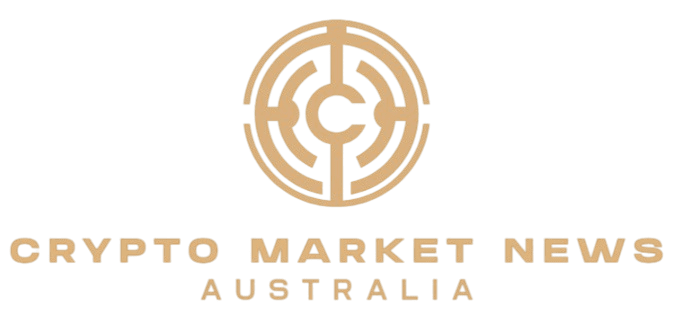Blockchain technology has unlocked a lot of doors. Investors are high on the potential uses of blockchain technology and the underlying technology that it will foster. The question is whether these blockchains will be able to handle the interoperability issues that have been plaguing pioneers like Bitcoin and Ethereum.
That is where Quant comes into the equation. The Quant Network was created to tackle those interoperability issues through the Overledger DLT operating system. Investors now wonder whether its native token, QNT, is something to get on board with or leave behind for other options.
What is Quant (QNT)?
Quant is a distributed ledger technology (DLT) service provider. Its primary goal is to improve communications and connections between various blockchains. Its software, Overledger, also happens to be the first API gateway in the world for leading blockchains.
Ultimately, Quant is focused on creating and building connections between the various distributed ledger networks. Both governments and organizations are provided infrastructure necessary to connect products between various blockchains while also efficiently transferring data between those systems.
Overledger is not necessarily a blockchain, but more of an Application Programming Interface (API) gateway. This API connects each of the blockchains to one another. Overledger is what allows these organizations to quickly and efficiently share information with other networks.
QNT is the native cryptocurrency token of Quant. It is used to power the Quant ecosystem, while also paying for usage on the Quant Network through transaction fees. QNT has its own market value as an investment that can be bought, sold, and traded on a variety of cryptocurrency exchanges.
Who are the Founders of Quant (QNT)?
The creation of Quant goes back to 2015, nearly a decade ago now. It was imagined by Gilbert Verdian, who was working in healthcare at the time. With more than 20 years of experience in upgrading the technology, business strategies, and security of businesses around the world.
Verdian identified that interoperability is critical for blockchain platforms, so he set out to create Quant. He did so alongside Dr. Paol Tasca, a digital economist with a background in distributed systems. Tasca worked with the EU Parliament, United Nations, and a variety of central banks from around the world, serving as a special advisor on blockchain technologies.
Colin Paterson eventually came on as well, acting as co-founder in 2017. He is Quant’s Chief Technology Officer (CTO). Previously, he held roles at Deutsche Bank and Vocalink (acquired by Mastercard in 2017) as a cybersecurity expert.
What Makes Quant (QNT) Unique?
Part of what makes Quant valuable is the features that are unique to its platform. These are the most important features to focus on:
mDApps. These multi-chain decentralized apps are able to operate across several blockchains at once, compared to DApps that can only operate on a single blockchain.
Overledger Network. The Overledger provides security, communication, and interaction across different blockchains without having to alter core structures.
Enterprise Focus. Quant has been designed to handle interoperability issues for large enterprises, providing the necessary tools to connect different products and systems to a variety of blockchains.
How Many Quant (QNT) Coins are There in Circulation?
Upon its creation, QNT was created with a total supply of 14,612,493 tokens. The maximum supply has nearly been met, with 14,544,176 QNT tokens currently in circulation.
Many other tokens have a burn mechanism in an effort to reduce the total number of tokens in circulation, creating value by improving the rarity of those tokens. Currently, QNT has no burn mechanism in place, but it is something that tokens adopt all the time.
How is the Quant Network Secured?
An important part of any network is its security function. The Quant Network is unique in that it has three layers to its security measures:
Overledger
Overledger acts as the blockchain operating system for the Quant Network. This is how the network facilitates interoperability between the various DLT networks. It uses an API gateway for businesses, allowing them to connect standard enterprise infrastructure to a number of blockchain ledgers.
Secure Asset Transfer Protocol (SATP)
Developed to work with the Internet Engineering Task Force (IETF), SATP has become the new technical standard for security on the internet. It works to standardize communication between networks while ensuring secure transactions across an array of DLT networks. SATP has been designed to improve security by creating a means for networks to conduct transactions and communicate effectively, all the while making the transfer of digital assets safer and more reliable.
Smart Contract Auditing
Finally, Quant is secured through the use of Quant Smart Audit. This contract auditing system makes it possible to identify and mitigate and potential security challenges or vulnerabilities. These contracts are tested rigorously by the Quant team, plus a group of external experts, in order to provide a resilient, production-ready, and tamper-proof system.
Quant Ecosystem
Each network has its own unique features that make it valuable on a number of levels. For the Quant Ecosystem, there are three features that stand out and make investors confident that its real-world applications could lead to greater adoption over time.
DLT Interoperability
The Overledger network offers solutions to the interoperability challenges facing Ethereum, Bitcoin, etc. Using a representational state transfer application programming interface (REST API), it is possible to connect an array of public, private, and commercial distributed ledger technologies.
REST APIs make greater use of current protocols while giving developers the chance to create apps without having to download new software or libraries. Data can simply be transferred between any two blockchains on the system using the Overledger DLT protocol.
Multi-DLT Smart Contracts
These smart contracts make more complicated processes, things like cross-chain atomic swaps between blockchains, far easier. This process involves the exchange of cryptocurrencies (something like Bitcoin for Ether) across these blockchains without the use of an intermediary to handle or verify the transactions.
Supprts mDApps
Compared to Dapps, which are limited to a single blockchain network, mDApps have features of several blockchains combined into a single app. These mDApps are also capable of supporting different program languages, partially because they are non-smart contract based.
FAQs
Is it safe to invest in Quant?
As is the case with any cryptocurrency, there are risks and upsides to investing in Quant. Let’s look at the upside. For starters, Quant offers interoperability solutions that some blockchains simply can’t. The team at Quant has tons of experience and the demand of the marketplace is growing. On top of that, Quant has real-world applications in healthcare, supply chain management, and financial services.
On the other hand, there are inherent risks to investing in Quant. For starters, cryptocurrency, as a whole, is quite volatile. Though some of the biggest names in the marketplace tend to be a bit more stable, the industry tends to be boom or bust. There are tons of competition and there are some adoption challenges facing enterprises. Finally, Quant has recently been trading with bearish sentiment, seeing declines in the short term.
Is now a good time to buy Quant?
Quant is trending bearish at the momentum, which leads some investors to say that now is the time to buy. Though there is something to be said about buying low and selling high, it isn’t that simple. Ultimately, it comes down to your own personal risk tolerance and investment goals.
There are factors with Quant that make it a promising investment in the long run. That said, there are some challenges that may keep it from rebounding in the short term. The key is to keep a close eye on it and see when it matches your investment portfolio.
What is Quant’s highest price ever?
Investors looking to make a Quant price prediction will find that it is as volatile an investment as any other form of cryptocurrency. On September 10, 2021, Quant hit its all-time high price of $428.45. It has since come down exponentially, currently trading just north of $106 per token.
What is Quant’s lowest price ever?
Like many other forms of cryptocurrency, Quant experienced the lowest price came right at the launch of its token. Just a few weeks after launch, Quant traded at its all-time low price of $0.2158 per token. Its most recent low after hitting a high of $428 per token came on June 10, 2022, when it dipped to $40.41 per token.
How Quant price changed over time?
Volatility is something that is discussed often when talking about cryptocurrencies. Unfortunately for Quant, it is no different than many in the marketplace. Quant’s price largely remained stable from its launch in July 2018 through January 2021, where it held at just north of $10 per token.
Like other cryptocurrencies that year, Quant exploded throughout 2021. In September 2021, Quant achieved its all-time high price. Unfortunately, it also began a steady decline, eventually hitting its “modern” low point in June 2022. It has since had smaller spikes, but has largely held about the same value, trending between $80 and $110 per token.
What affects the Quant price?
Quant faces several factors that have a substantial impact on its price. For starters, the fundamental goals of its blockchain connectivity initiative are a major factor to consider. Investors may be thinking about a short-term gain, but are more concerned about the long-term value potential of Quant.
Adoption and technical analysis are key factors as well. Some analysts are bearish on Quant while others remain optimistic about its potential. Finally, there is the natural market volatility of cryptocurrency to consider. The marketplace is constantly changing, with even the largest tokens facing challenges.
What is the fully diluted valuation of Quant (QNT)?
The fully diluted valuation of a token is easy to calculate. First, you take the maximum token supply and multiply that by the current market price of that token. In this case, Quant has a maximum token supply of 14,612,493 QNT tokens. When multiplied by its current value, we see that Quant has a fully diluted valuation of $1.565 billion USD.
What is the history of Quant?
The history of Quant goes back to 2015, nearly a decade ago now. It was imagined by Gilbert Verdian, who was working in healthcare at the time. With more than 20 years of experience in upgrading the technology, business strategies, and security of businesses around the world.
Verdian identified that interoperability is critical for blockchain platforms, so he set out to create Quant. He did so alongside Dr. Paol Tasca, a digital economist with a background in distributed systems. Tasca worked with the EU Parliament, United Nations, and a variety of central banks from around the world, serving as a special advisor on blockchain technologies.
After being created in 2015, Quant launched its initial coin offering (ICO), raising more than $11 million in capital. Verdian remains the CEO of Quant while also acting as the Chair of the UK Blockchain and Distributed Ledger Technology committee.
How much will Quant be worth in the future?
The real question investors have is about the future price point of Quant. It has been seeing bearish movement of late, but investors are hopeful for the immediate and long-term future. Currently, Quant is trading at around $106 per token. By this time in 2026, things should look substantially different.
Some feel that it will be around $168-$198 per token by May 2026. Though there are factors that can change that trajectory, changing regulations could push Quant in the right direction in a hurry.

